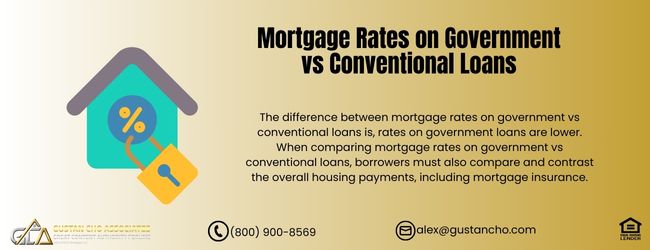HUD Multi-Family Mortgage Guidelines on FHA Loans

In this article, we will discuss and cover HUD Multi-Family Mortgage Guidelines on FHA loans. HUD Multi-Family Mortgage Guidelines on 2 to 4 unit properties state home buyers can purchase multi-family units with FHA Loans with a 3.5% down payment. HUD Multi-Family Mortgage Guidelines require less down payment requirements on FHA loans than Conventional loans. Fannie Mae and Freddie Mac now requires a 5% down payment on owner-occupant 2 to 4 unit multi-family owner-occupant homes. In the following sections of this guide, we will cover HUD Multi-Family Mortgage Guidelines on FHA loans.
Buying a Two-to-Four Unit Multi-Family Home With an FHA Loan
HUD Multi-Family Mortgage Guidelines allow 2 to 4 unit owner-occupant home buyers to purchase with a 3.5% down payment. Borrowers need at least a 580 credit score. 2 to 4 unit properties are becoming increasingly popular among homebuyers who plan on occupying one unit and rent the remaining units for rental income. It is an excellent way to invest in real estate. It is also easier to manage since the tenants are all in one location. In this blog, we will discuss HUD Multi-Family Mortgage Guidelines on 2 to 4 unit homes. Click here Buy a Two-to-Four Unit Multi-Family With An FHA Loan
HUD Multi-Family Mortgage Guidelines Eligibility Requirements
Borrowers need to meet minimum HUD Multi-Family Mortgage Guidelines
- 580 credit scores for 3.5% down payment FHA Loan
- 2 years out of Chapter 7 Bankruptcy discharge date
- 3 years out of foreclosure, deed in lieu of foreclosure, short-sale
- Outstanding collections and charged-off accounts do not have to be paid off
- Maximum front end debt to income ratio 46.9% and 56.9% back end to get an approve/eligible per automated underwriting system
- Manual underwriting allowed
- Borrowers in a current Chapter 13 Bankruptcy repayment plan can qualify with Trustee Approval and manual underwriting
- No waiting period after Chapter 13 Bankruptcy discharged date
- No landlord experience required
- Reserves cannot be gifted: Needs to be borrower’s own funds
Types of Properties Eligible For HUD Multi-Family Mortgage Guidelines
HUD only allows owner-occupant primary residence properties to be eligible for FHA financing. Borrowers who meet the minimum HUD guidelines on FHA loans can qualify for a two-to-four-unit residentially zoned multi-family property is eligible for HUD Multi-Family Mortgage Loans. Lenders consider two to four-unit properties riskier than single-family homes. Therefore, mortgage rates on 2 to 4 units will be higher than single-family homes. There are no reserve requirements for one unit homes. There is one month of reserve requirement on two-unit homes. However, HUD requires three months of reserves for three to four-unit properties. One month’s of reserves is one month of principal, interest, taxes, insurance (PITI). Manual underwriting is allowed on multi-family FHA loans. Manual Underwriting Guidelines apply. Plus the multi-family property needs to meet the HUD FHA multi-family mortgage guidelines self-sufficiency test.
Can I Use Potential Rental Income As Qualified Income?
Great news with buying a 2 to 4 unit multi-family owner-occupant property is that you can use the potential rental income on the non-occupying units as qualified income. The potential rental income is determined by the home appraisal. FHA allows 85% of the potential rental income to be used as qualifying income. This holds true for vacant units. Danny Vesokie, the President and CEO of Affiliated Financial Partners advises the following:
Proposed rental income may be used when verified by the underwriter. With no history of rental income Fannie Mae form 1025 or Freddie Mac form 72 needs to be completed (Small Residential Income Property Appraisal Report) by the appraiser.
Homebuyers who are buying a 2 to 4 unit multi-family home and need a mortgage company with no lender overlays, please contact us at GCA FORUMS Mortgage Group at 800-900-8569 or text us for a faster response. Or email us at GCA FORUMS Mortgage Group at gcho@gustancho.com. We are available 7 days a week, evenings, weekends, and holidays. Click here for your mortgage enquiry today
Frequently Asked Question on HUD Multi-Family Mortgage Guidelines
Below are home buyers’ most frequently asked questions (FAQs) about purchasing two-to-four-unit multi-family homes with an FHA loan. This includes the eligibility criteria, down payment, reserves, credit score, income, and property types concerning the four walls:
Can an FHA Loan Be Used to Purchase a Two-to-Four-Unit Multi-Family Home?
Answer: This can be a resounding yes. FHA loans may be used to purchase two to four multi-family properties provided the borrower occupies at least one of the units as their main home. FHA loans favor buyers who want to live in one multi-family unit and rent out the rest. This is an enticing prospect since it helps alleviate the mortgage payment burden.
What is The Two-to-Four-Unit FHA Loan Down Payment Requirement?
Answer: With an FHA loan, the minimum down payment required is 3.5% of the purchase price for single-family homes and two-to-four-unit properties. However, one must have a credit score of at least 580 to gain from the 3.5% down payment offers. Even if scoring between 500 and 579, a normal deposit of 10% will be needed.
What Credit Score Levels Are Necessary When Purchasing a Multi-Family Property Using an FHA loan?
Answer: The credit score requirements for FHA loans are 580 minimum for a 3.5% down payment FHA loan. For credit scores under 580 and down to 500, the down payment is 10% per HUD guidelines on FHA loans.
- Five hundred eighty and above: You can avail yourself of the 3.5% down payment.
- 500 to 579: You can still qualify but must put down at least 10%.
- Below 500: Not being able to get an FHA loan.
Some lenders will have overlays and may require higher credit scores, while the HUD guidelines set the minimum at 500.
What are The Other Income Requirements When Applying for an FHA Loan on a Multi-Family Property?
Answer: The income requirements for an FHA loan are judged as per the ratio of the debt-to-income ratio to the total available income (DTI), which forms part of the criteria:
- Front-End DTI: lenders require the front-end DTI, including housing accident-related expenses, to be within a threshold of 46.9% front-end debt-to-income ratio of the borrower’s monthly gross income.
- Back-End DTI: The total DTI, which includes every debt regardless of its type (credit card, student debt, car debt), should be at most 56.9%. Only a few exceptions can be made if compensating factors exist.
- Supplementary Income: Regarding two-to-four-unit properties, applicants can consider rental income generated from the other units in the property as qualifying income. Whenever this threshold aligns with industry practices, 75% of the rental income from the rental units is accounted for in total income, helping ease your DTI.
HUD Multi-Family Mortgage Guidelines on Reserves
Answer: In the case of an FHA loan against two-to-four-unit properties, reserves are usually advised. Reserves are defined as the amount over and above the closing costs of the equity, which usually is expressed as several months of payment:
- Two-Unit Property: Reserves consist of 3 months’ mortgage payment worth.
- Three-to-Four Unit Property: Reserves are more than six months of mortgage payments.
Reserves may not be applicable in single-family bungalows but tend to be required in multi-family properties.
HUD Multi-Family Mortgage Guidelines on Owner-Occupancy
Answer: Yes, so long as an FHA loan is used, someone will have to live in at least one unit of the property purchased with the loan for not less than a year. Buying a multi-family property is the most important FHA loan requirement. After the first one, you can stay or leave, but the law will still govern the same property.
HUD Multi-Family Mortgage Guidelines on Property Standards
Answer: The property must meet specific HUD standards, including Safety, Security, and Soundness. The property must be habitable and not pose any safety hazards or structural problems that require excessive repairs.
FHA Appraisal: An FHA-qualified appraiser will evaluate the prospective property to confirm compliance with the FHA’s Minimum Property Requirements (MPRs), including adequate provision for utilities, construction, protection from elements, and sewage and water connection.
HUD Multi-Family Mortgage Guidelines on FHA Self-Sufficiency Test (applicable for properties with three and four units only)
The anticipated rent income should be sufficient to meet the total mortgage payment. The rents will be structured so that the property does not depend on the borrower’s income to make mortgage payments.
HUD Multi-Family Mortgage Guidelines on Using Rental Income From Occupied Units For DTI Calculations
Answer: You can take the projected rental income from the other units when qualifying for the FHA loan. Most lenders will let you take up to 75% of anticipated rental income from the other units to lower the debt-to-income ratio. To do this, you must obtain an appraiser’s rent schedule (Form 1007), establishing the rent for the property at fair market value.
HUD Multi-Family Mortgage Guidelines on FHA Loan Limits on Two-to-Four Unit Homes
Answer: Yes, all FHA loans have a maximum loan amount subject to the area or location of the building and the number of units in the building. Multi-family loan limits are higher than single-family home limits – a fixed loan cap for each property size (CLICK HERE FOR LOAN LIMIT LINK):
- Two Unit Properties – Loan limits are higher than those for single-family homes.
- Three to Four Unit Properties – These, too, have even higher limits.
Several counties impose loan limits. It is recommended that you check the FHA loan limits for your county. It is crucial, especially when you are buying a more expensive property.
HUD Multi-Family Mortgage Guidelines on Financing Fix and Flip Properties
Answer: Never. This is because the FHA loans are for owner-occupants only. Hence, flipping or buying properties for rent is a no-no. After all, FHA loans have a waiting period where you must occupy the subject property for a minimum of 12 months after closing the loan. If renovation of multi-unit houses interests you, then the FHA 203(k) MORTGAGE might help since it offers you the chance to buy and repair a property all in one loan.
HUD Multi-Family Mortgage Guidelines on Refinancing
Answer: You can refinance a property of two- to four-unit multi-family loans with an FHA loan. You could use:
- FHA Streamline Refinance: This is a refinance product for an existing FHA loan that does not require the borrower to provide an appraisal or much documentation if they are current on their payments.
- FHA Cash-Out Refinance: FHA cash-out refinance will give you more than taking out a new mortgage, i.e., taking out more than necessary to pay off the old one and cashing more of the mortgage due. However, it will require documentation and appraisal.
What are The Advantages of HUD Multi-Family Mortgage Guidelines Using an FHA Loan?
Answer:
- Low Down Payment: It is even possible to acquire a multi-family property with just 3.5 percent down, more than an investment property, which is more than an apartment and multi-family house.
- Rental Income: If you move into one unit and rent out the others, you can use the rental income to help qualify you for the mortgage. It even gets you closer to affording the mortgage every month for repayments.
- FHA Flexibility: Compared to conventional loans, FHA loans are generally more flexible regarding credit scores and DTI ratios.
This makes it possible for those who use FHA loans to own a two-to-four-unit multi-family property where a home and rental income are realized while enjoying the status of both a tenant and a landlord. Additionally, a minimum primary tenant can understand the criteria, down payment percentage, reserves, and property guidelines to rent multi-family units using an FHA loan.
This guide on HUD Multi-Family Mortgage Guidelines Was UPDATED on September 4th, 2024.







Responses